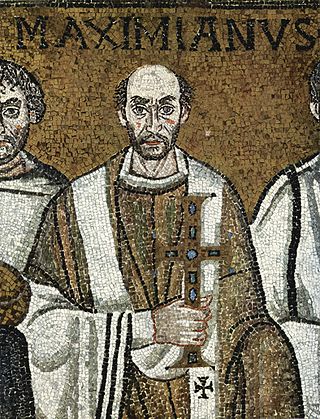The 6th century is the period from 501 through 600 in line with the Julian calendar.
The 610s decade ran from January 1, 610, to December 31, 619.
The 540s decade ran from January 1, 540, to December 31, 549.
The 550s decade ran from January 1, 550, to December 31, 559.
The 560s decade ran from January 1, 560, to December 31, 569.
The 570s decade ran from January 1, 570, to December 31, 579.
The 580s decade ran from January 1, 580, to December 31, 589.
The 590s decade ran from January 1, 590, to December 31, 599.

Year 573 (DLXXIII) was a common year starting on Sunday of the Julian calendar. The denomination 573 for this year has been used since the early medieval period, when the Anno Domini calendar era became the prevalent method in Europe for naming years.

Year 586 (DLXXXVI) was a common year starting on Tuesday of the Julian calendar. The denomination 586 for this year has been used since the early medieval period, when the Anno Domini calendar era became the prevalent method in Europe for naming years.

Year 556 (DLVI) was a leap year starting on Saturday of the Julian calendar. The denomination 556 for this year has been used since the early medieval period, when the Anno Domini calendar era became the prevalent method in Europe for naming years.
Year 574 (DLXXIV) was a common year starting on Monday of the Julian calendar. The denomination 574 for this year has been used since the early medieval period, when the Anno Domini calendar era became the prevalent method in Europe for naming years.

Year 590 (DXC) was a common year starting on Sunday of the Julian calendar. The denomination 590 for this year has been used since the early medieval period, when the Anno Domini calendar era became the prevalent method in Europe for naming years.

Year 572 (DLXXII) was a leap year starting on Friday of the Julian calendar. The denomination 572 for this year has been used since the early medieval period, when the Anno Domini calendar era became the prevalent method in Europe for naming years.

Year 582 (DLXXXII) was a common year starting on Thursday of the Julian calendar. The denomination 582 for this year has been used since the early medieval period, when the Anno Domini calendar era became the prevalent method in Europe for naming years.
Justinian was an East Roman (Byzantine) aristocrat and general, and a member of the ruling Justinian dynasty. As a soldier, he had a distinguished career in the Balkans and in the East against Sassanid Persia. In his later years, he plotted unsuccessfully against regent and later emperor Tiberius II.
Hermogenes was an Eastern Roman official who served as magister officiorum, military commander and diplomatic envoy during the Iberian War against Sassanid Persia in the early reign of Emperor Justinian I.
Gubazes II was king of Lazica from circa 541 until his assassination in 555. He was one of the central personalities of the Lazic War (541–562). He originally ascended the throne as a vassal of the Byzantine Empire, but the heavy-handed actions of the Byzantine authorities led him to seek the assistance of Byzantium's main rival, Sassanid Persia. The Byzantines were evicted from Lazica with the aid of a Persian army in 541, but the Persian occupation of the country turned out to be worse, and by 548, Gubazes was requesting assistance from Byzantium. Gubazes remained a Byzantine ally during the next few years, as the two empires fought for control of Lazica, with the fortress of Petra as the focal point of the struggle. Gubazes eventually quarrelled with the Byzantine generals over the fruitless continuation of the war, and was assassinated by them.
Bawi was a Sasanian military officer from the Ispahbudhan family who was involved in the Anastasian War and the Iberian War between the Sasanian and Byzantine Empire. He is also known as Aspebedes, which is a corruption of the title spahbed.
Mahbod, was a 6th-century Iranian ambassador and military officer from the House of Suren, who was active during the reign of the Sasanian shahanshahs Khosrow I and Hormizd IV.






